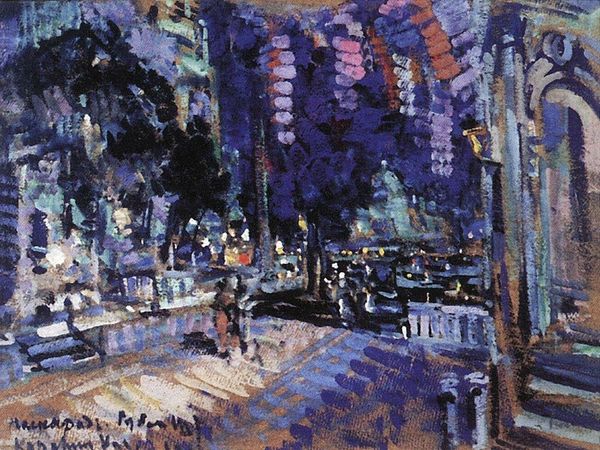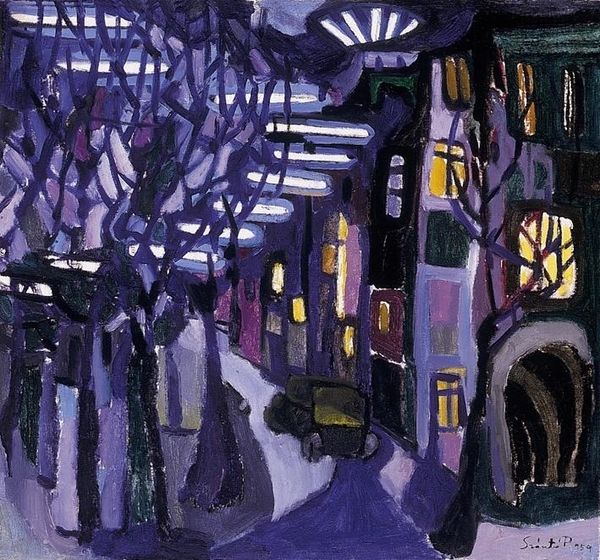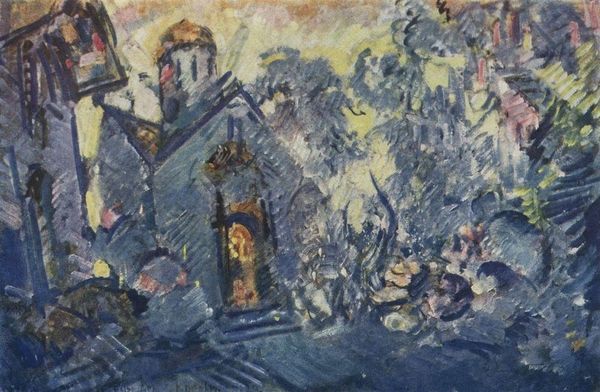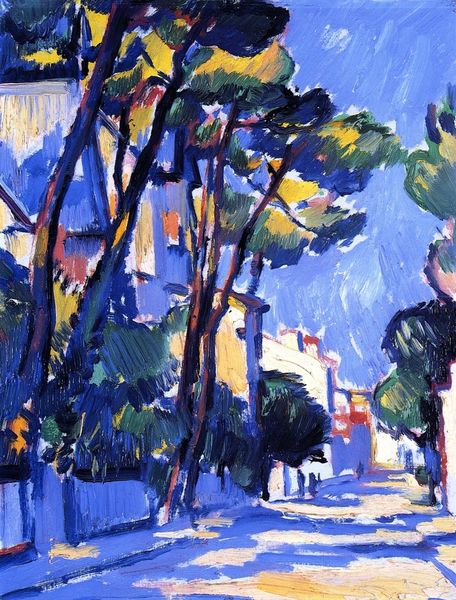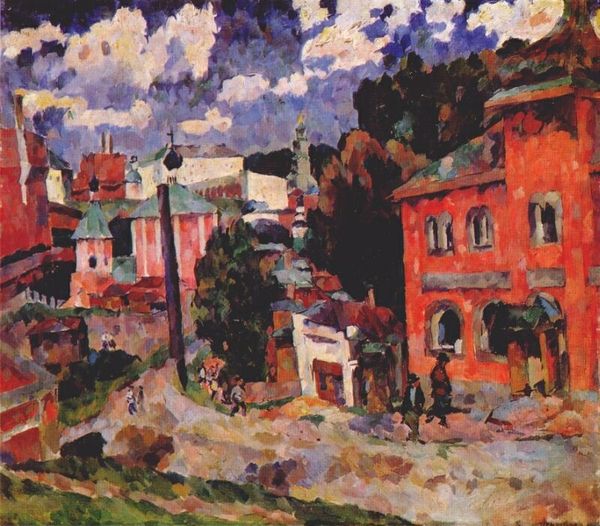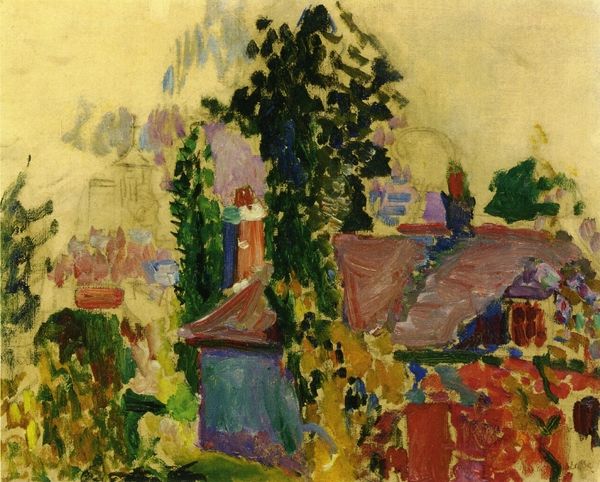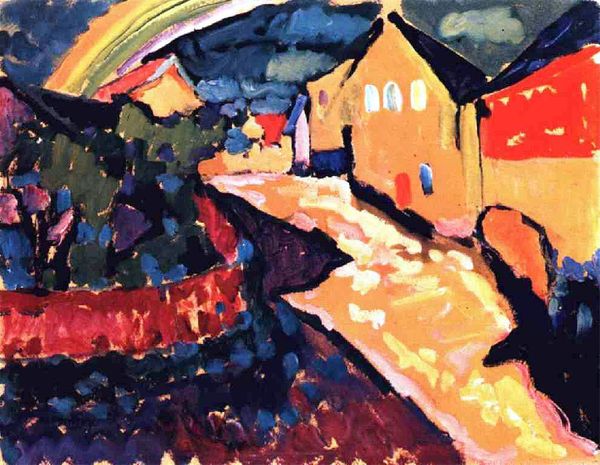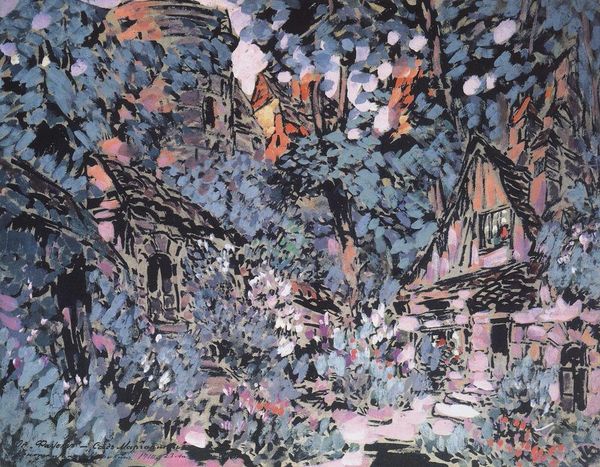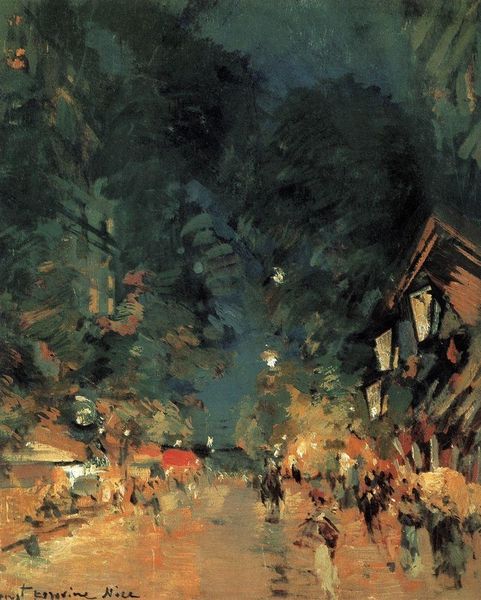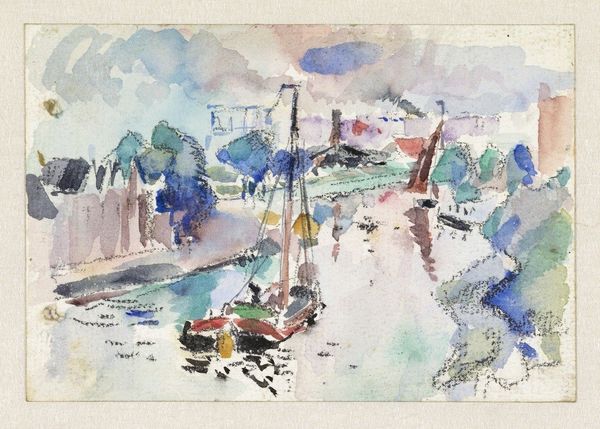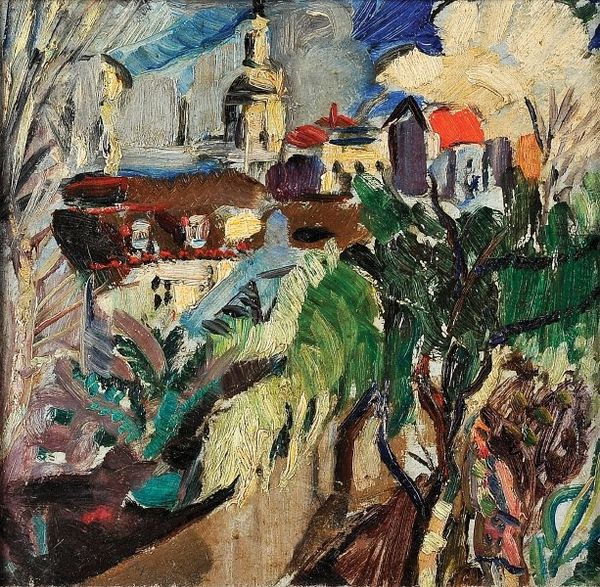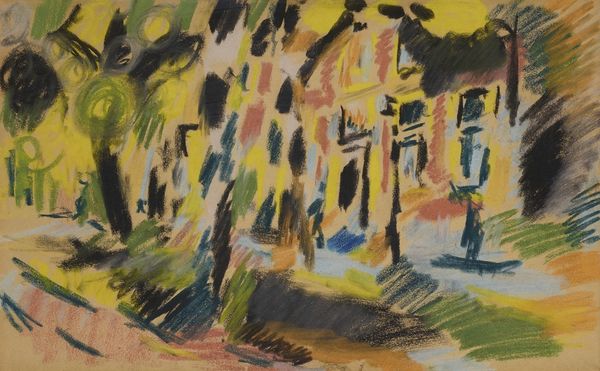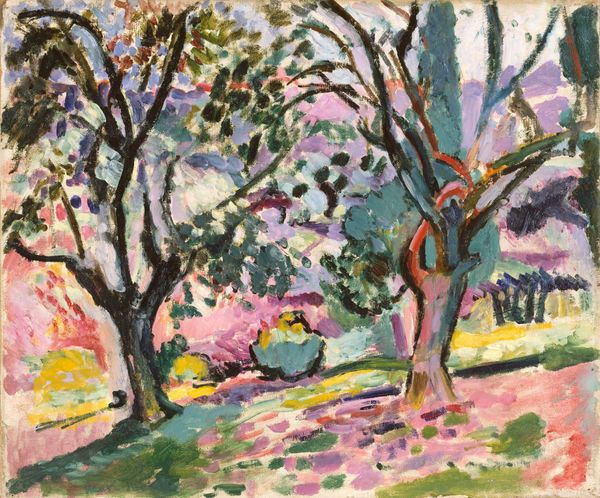
Sketch for the opera, 'The Tale of Tsar Saltan', by Nikolai Rimsky Korsakov 1913
0:00
0:00
Dimensions: 64.3 x 49.1 cm
Copyright: Public domain
Curator: Here we have Konstantin Korovin's 1913 painting, "Sketch for the opera, 'The Tale of Tsar Saltan', by Nikolai Rimsky Korsakov," currently held at the Pushkin Museum in Moscow. Editor: It’s captivating. I’m immediately struck by the dramatic use of dark blues and whites—it’s like looking into a slightly unsettling dream of a cityscape, full of houses and foliage. Curator: It's fascinating how Korovin evokes the fairytale essence of the opera itself through visual cues, don't you think? The architectural structures lean toward traditional Russian designs. The use of color gives them an otherworldly presence, fitting Rimsky-Korsakov's fantastical narrative. Editor: I see that. And the application of the paint itself is quite striking. Look at those loose, gestural brushstrokes—it's less about precise representation and more about capturing the feeling, the very texture of this imagined space. He's building atmosphere through materiality. What was the artistic climate like at the time he painted this? Curator: Korovin was definitely engaging with avant-garde movements like Fauvism and Impressionism, prioritizing bold color and spontaneous mark-making. But, even more than that, there's something so quintessentially Russian about the symbolism. One can recognize architectural traditions inherited from Orthodox imagery. It’s less about an objective depiction and more about the psychological and spiritual impact of the landscape. Editor: Absolutely. It's the expressiveness of the handling, too. This isn't some finely rendered set design. The quick strokes seem economical—the final production surely had a budget, time limits, deadlines... He's finding creative freedom in the sketch itself. A physical, process-based mode of conveying information that is truly palpable. Curator: It is interesting to observe that there's a duality at play. The painting hints at cultural permanence while embracing an aesthetic that valued individual perception. The opera itself reflects this duality. Grounded in folk tales, yet elevated through high art, this work exists where history meets innovation. Editor: Thinking about it as an audio-visual aide for a larger spectacle really sheds some light here. It has helped to bring a kind of haptic feedback into how I envision set design. It's like Korovin's work invites you to participate, to rebuild the scene with your own memories, emotions, and labor. Curator: Exactly. It becomes more than just stagecraft. It acts as a reminder of our emotional connection to both place and narrative. Editor: Well, this look at Korovin's painting made me consider how an object of inspiration like a preliminary painting comes together under the economic conditions of culture making. Curator: For me, I see how powerful an image can be in conjuring stories and maintaining the resonance of tradition, even within the theatre.
Comments
No comments
Be the first to comment and join the conversation on the ultimate creative platform.
